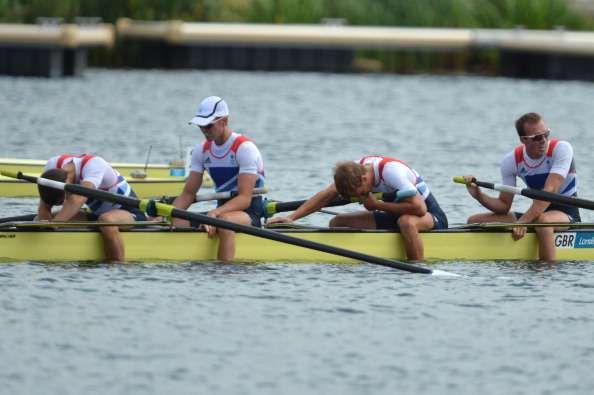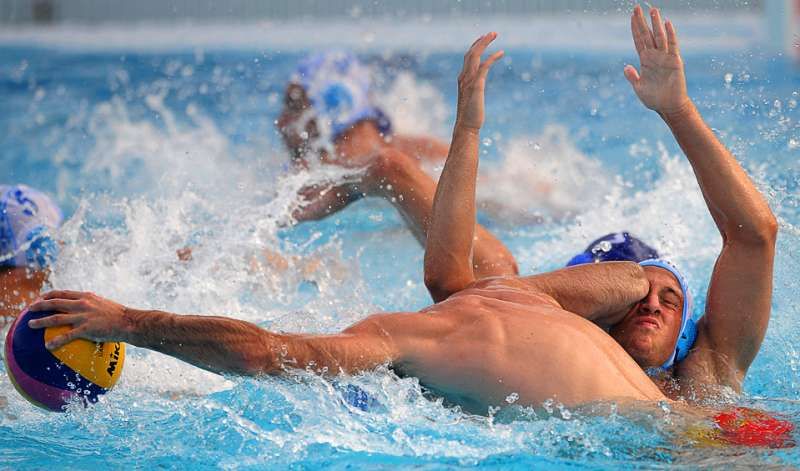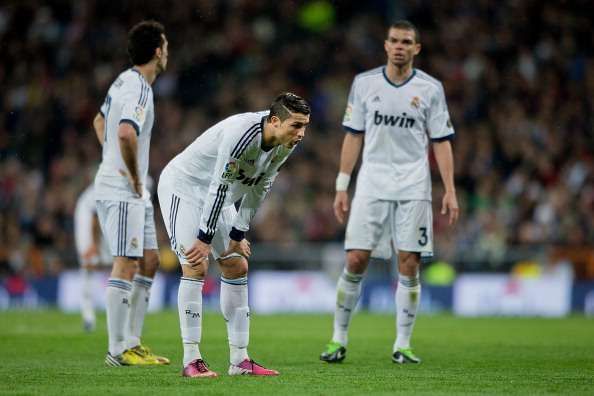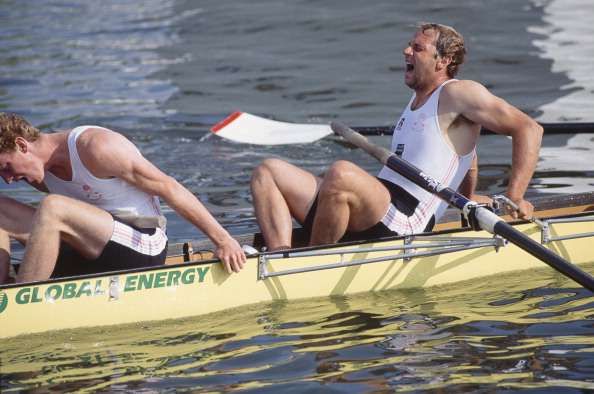
A definitive ranking of the 10 most exhausting sports in the world
For many of us, 'exhaustion' is a feeling of fatigue that we get after a particularly hard day's work. That feeling is almost invariably cured by a good night's sleep, which is usually enough to replenish the depleted reserves of the body and soothe the muscles.
But it doesn't quite work that way in the case of the draining, punishing, excruciating fatigue that professional athletes face.
The exhaustion experienced by athletes often goes beyond the point when the muscles put up the white flag. Professional sports push you beyond the point of physical depletion, and challenge you to sink or swim.
But are all sports equally exhausting? The obvious answer is no. That logically leads us to another question: which is the most exhausting sport of all?
There are multiple ways of deciding that. Calorie expenditure would be one measure, while loss of body fluid and duration of play can also indicate how hard your body is working.
Here's an in-depth, scientific look at the top 10 most exhausting high-profile sports in the world:
Honourable mentions
Tennis

Until you have gone a few sets on the court, it is difficult to appreciate how physically taxing tennis can be. You only have to look at the epic six-hour battle between Novak Djokovic and Rafael Nadal in the final of the 2012 Australian Open to understand the insane demands of tennis.
The only reason tennis isn't higher on this list is because of the numerous short breaks the players enjoy between points, games and sets. Moreover, most of the matches don't go the distance the way that Nadal-Djokovic marathon did.
At the US Open in 2014, the average length of a match was 2 hours and 44 minutes. On grass, the duration is even shorter; the average duration of the men's final at Wimbledon from 1980 to 2006 was 2 hours and 31 minutes. The clincher is that the ball is in play for less than 20% of any tennis match.
Even if we take 20% of 2:44 as the duration of play, it works out to 32.8 minutes. On average, a player would burn 270 calories while playing a tennis match.
Football
It may seem strange to see football outside the top 10, but the fact remains that the players always enjoy ample downtime, where they are just jogging lightly, compared to other sports on this list. Although some footballers can be seen covering seven miles a game based on the position they play, there is plenty of lax time on the field.
Still, those 90 minutes can be hellishly excruciating, and players have been known to burn up to 1,050 calories and lose a couple of kilograms of body fluid weight during football matches.
Having got the honourable mentions out of the way, here’s a countdown of the 10 most exhausting sports:
10. Rowing
How tiring can a sport be if it requires you to sit for the entire duration? The answer: dizzyingly exhausting.
Rowing is like sitting in a meat grinder. You churn your arms like rusty blades on clunky fulcrums, which disembowel your interiors with each stroke.
In his book The Shell Game: Reflections on Rowing and the Pursuit of Excellence, Stephen Kiesling credits the introduction of sliding seats with turning rowing into full body torture. He says, "By integrating the legs and stomach with the back and arms, all of the major muscle groups were harnessed. If one wanted to lay waste to all the energy in the body in the shortest possible time, rowing would be the way to do it.”
Most exhausting sports ask you to push your body to the limit, while allowing you crawl space to continue even after your tank is empty. If you were to lift a heavy set of dumbbells set after set, your arms would stop responding after a while. But swinging an oar is just tough enough below the threshold of failure that you can continue to row while setting your sinews on fire.
Here's what Olympic legend Matthew Pinsett has to say on the rigours of rowing: "Your senses are not in control anymore and they start to leave you. The hearing will go, the vision goes out of sync, there isn't much left. Your body starts to close down anything it doesn't need at that moment. It prioritizes to the parts of the body that are in trouble, like your muscles suffering the agony of the row."
In rowing, the 'sprint' races are 2 kilometres long, while the longer races last 5 km. It takes about 5-7 minutes to row a sprint of 2 km, which is faster than most people can run that distance. Over that length, your life begins to flash before your eyes.

Pretty much every muscle group plays a part in rowing. Even though you use your arms to row, the rest of the body is involved in anchoring yourself to the boat and establishing fulcrum for a row. It's been claimed that about 60% of the power involved in rowing comes from the legs.
The rowing motion also compresses your lungs, adding to the difficulty of breathing. It's been remarked that participating in a 2 km rowing race can leave you as drained as playing two basketball games back to back. A professional rower needs to consume over 6,000 calories every day to meet the demands of the sport.
The repetitive motion in rowing fills your muscles with lactic acid, which in turn is converted into ammonia, giving you humongous headaches. It is not uncommon to see rowers throwing up at the finish line and appearing dizzy and disoriented.
Professional rower Ashleigh Teitel describes the hell of rowing thus: "An abyss of pain, which opens up in the second minute of the race. Large needles are being driven into your thigh muscles, while your forearms seem to be splitting. Then the pain becomes confused and disorganized, not like the windedness of the runner or the leg burn of the biker but an all-over, savage unpleasantness.”
In addition to the shorter 2,000-metre rowing races which are the standard for the Olympics and bitingly painful in their own right, there are some other mind-boggling rowing races which can wring the consciousness out of your body. The Tour du Lac in Geneva, Switzerland is one such example. It's a 160-kilometre long journey of pain – the longest non-stop rowing race in the world. Teams routinely take around 12 hours to complete it, and you can imagine the difficulties of refueling and relieving oneself while rowing around Lake Geneva.
If that isn't exhausting enough, try the Great Pacific Race for fun. This is by far the most challenging endurance race of any kind on our planet, covering 3,862 kilometres without any support, and it can take between 30 to 80 days to complete. Wind and other variables can result in the distance increasing as the boats veer off course, and the journey will leave you drained unlike any other sports event on earth.
Calories burnt per minute: 14
Sweat loss per minute: 0.03 litres
Duration: 8 minutes (much longer for non-Olympic races)
9. Water Polo

At first glance, water polo seems like one of the most relaxed sports around. We see 14 players wading around in a smallish pool, looking slow as snails as they try to cut through the water and score.
But mistaking water polo for a fun frolic in the pool is as erroneous as mistaking the tip of an iceberg to be a mild speed bump for a ship. Much like an iceberg, which hides over 80% of its girth underwater, water polo is a brutal blood bowl of survival in the water, where seven well-trained sharks try to rend you asunder.
A number of factors contribute to making water polo so exhausting. The very rules of the game are designed to maximize fatigue: you cannot stop pedalling for even a second when the game is on, as you can't touch the floor or the sides of the pool when the ball is in play. So the players have to constantly pedal to stay afloat, which in itself would make it a punishing exercise.
The game features a 30-second shot clock, during which the teams have to attempt a shot or forfeit possession. The players aren't allowed to wear goggles or any protective gear, as that might hurt their opponents. Only earplugs are allowed.
It doesn’t help that the activities take place in water. When placed underwater, the human body spends a lot of energy in maintaining equilibrium temperature. If the water is too cool, it can reduce the blood flow in your body and cause the muscles to get strained. That forces the body to spend energy to keep warm. Conversely, if the pool is warm, it can increase fatigue. A lot of the pools also have liberal amounts of chlorine, which can cause fatigue by restricting breathing.
Playing water polo can feel like being thrown into a giant washing machine, with sharp blades that smack you around while you try not to drown. One of the most violent sports in the world, which is deceptively disguised as a benign exercise, water polo allows the participants to inflict untold amount of pain on their opponents.
The players surreptitiously punch, kick, claw, scratch and try to dunk the opponent underwater. Often, they don't even bother being surreptitious. There are very few other sports which allow for so many underhand shenanigans.
Water polo players have been known to pull on each other's armpit hair, whack their opponent under the guise of swimming strokes, pull on the ear guard strap or swimming trunks, have a go below the belt, punch the throat to restrict breathing – the list goes on.
Bones are broken, eyes are gouged out and concussions are distributed like candy. It is common to see players with purple bruises all over their body, looking like the missus caught them cheating and had a roller handy.
In an infamous battle between Hungary and USSR at the 1956 Olympics, proceedings got so heated with punches and kicks that the match came to be known as 'Blood in the Water'. Water polo is a brutal, painful, exhausting and gut-wrenching sport, whichever way you look at it.
Calories burnt per minute: 11.7
Sweat loss per minute: 0.01 litres
Duration: 32 minutes


